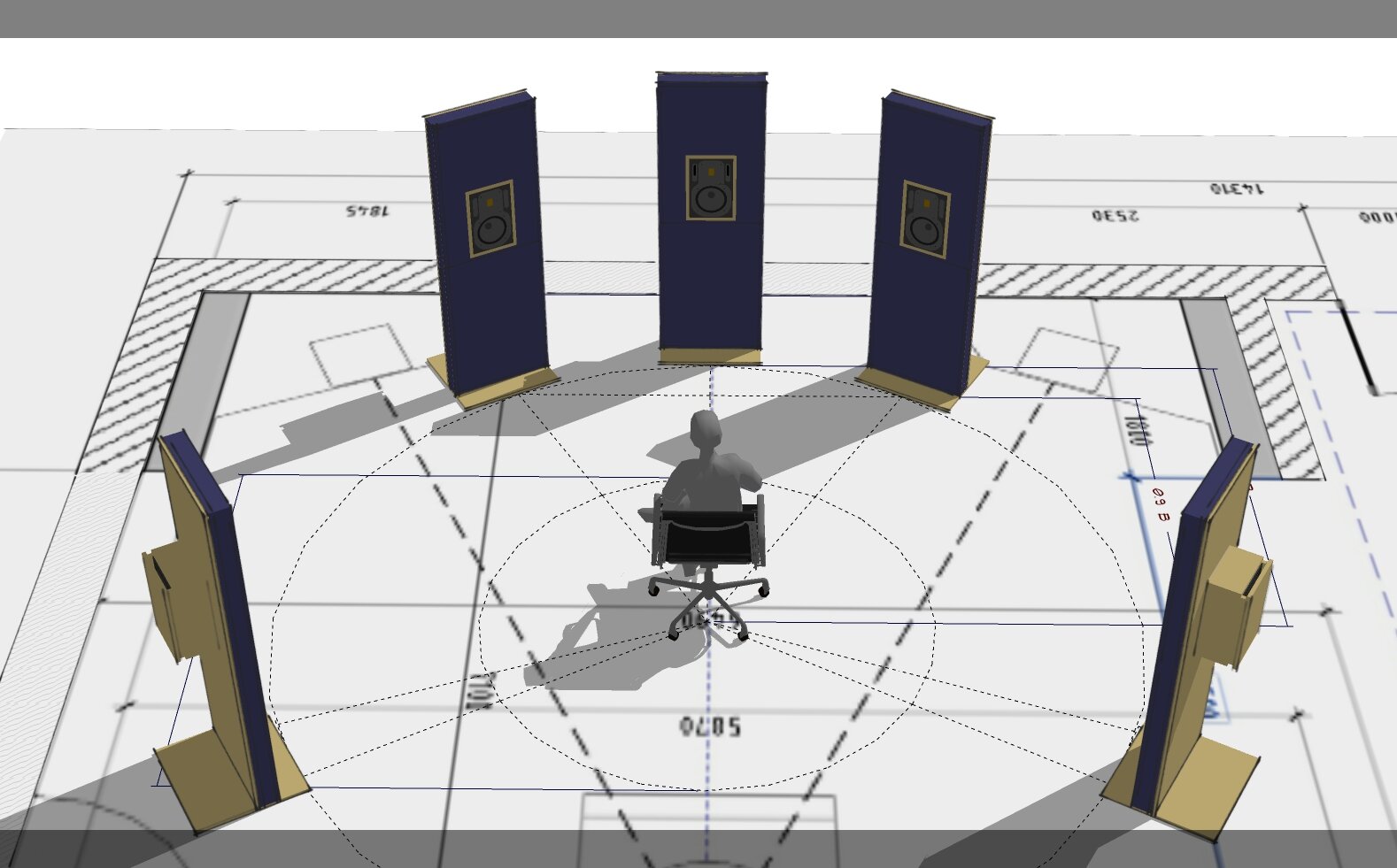-
Posts
2,301 -
Joined
-
Last visited
Everything posted by Glenn Stanton
-
BandLab should acquire Finale or Sibelius and integrate and be done with it.
-
i would suggest it be a setting - i would not want the track to force a clip rename or vice-versa unless i enabled it. my track names often share a single clip for arranging and effects, etc so having the track name change to the clip or vice versa would make more work (for me). but there are also times i want to go in and just edit the tracks on a projects and definitely would want the clips to follow suit. so +1
-

Tempo track like any automation line
Glenn Stanton replied to Timo Finkbeiner's topic in Feedback Loop
+1 -
i just had Optimum (north NJ) installed - 300/300 - i was on 100/20 - the difference is radical (but expected by me as having experience building fiber networks). even if i'm at the far end of the house from the wifi router (about 60ft) i'm still doing 200 down and 180 up... i uploaded 2TB (1 each to Google and OneDrive) in about 16 hours... keeping in mind 300mbs = 30Mbs... and yes, at some point the switching circuit where all the fibers connect will have to share. in general a switch consists of say 6 independent sections (often called an "ASIC"), each typically with 12 fibers. if done correctly the sections will be balanced so only a few are truly active at a time - resulting in best overall performance for that switch - but if they stack everyone on a single section before moving on to the next one, it can become congested quickly. always a good idea to ask the installer "hey, can i get my fiber connection on it's own ASIC?" and maybe they can, in which case you'll have some nice speed for a while ? also, ask if the can get the levels to -20db or higher (most times the minimal spec is -24db) (mine is -17db) and this may require a couple of tries on the "fusing" operation (where they connect the raw fiber to the fiber lead going into a TOSLink-type connector box). much more reliable that way...
-

VST issue with the 2021-01 098 build
Glenn Stanton replied to Monte Knight's topic in Cakewalk by BandLab
might be the settings you're using? if you select "all synth audio outputs: mono" (for example) and a "MIDI Source" you might end up with 3 or more tracks... -
ok, after reviewing these, you're fired man! ?
-
i tried to follow the "standard" color scheme for tracks and busses, but, there are too many of them! ? so i compiled them and did it based on % of templates and color schemes... some from pro tools, recording standards, and many contributions from folks regarding how they color their tracks and busses. so let me know what you do with it as i'm always looking out for more normalization of my templates. yeah, the noise is used to listen to a low level (reduced 12db + pink noise) to see what pops out and what's missing. i've only just started using that technique in the last month or so and i've found it handy as a reference. for my monitoring - i use the Wave NX when under the cans.
-

Cakewalk Start Screen- show All Templates?
Glenn Stanton replied to sadicus's topic in Cakewalk by BandLab
on the same set of tabs as the media browser - you see the notes icon - you can change the image there. however, i've found that the image doesn't show up in the templates part of the start screen, but once i save a project with that template, it does display it with existing projects part. -
doesn't the new track per take in the preference->recording section do that? actually it just creates a single WAV file, but if you then bounce each track take to a clip, it creates a separate WAV file. track 6 (track 1 rec(11) file name) is the original single file of take imported. but if you bounce each to a clips - an individual WAV file is created:
-
probably need to create a test template (bundle likely) with stock plugins and using various sweeps etc to exercise across a variety of conditions - EQ, compression, reverb, delays, saturation, modulation, levels, pans, tempo changes, automations, groove clips, etc. maybe a bunch of the Pro Channel, SI and other include VI synths, and Sonitus plugins, REW (or other) full spectrum sweeps, noise, and reversed, and say 30 tracks, 5 aux busses, 6 busses, and one set of WAV files for 44.1K@16bit, 48K@24bit, and 96K@32bit clips. loop over say 30 seconds - so there is "settle" time. maybe some marker bursts ever 5 seconds - 1K@-18db. and for extra pain, an academy leader-type video clip that repeats 3x (10 seconds per). that way the complete package for a given test template would be something manageable in size but truly painful on a system ?.
-

even numbered inputs on Scarlett 18i20 not listed
Glenn Stanton replied to Penny Fowkes's topic in Instruments & Effects
@msmcleod similar experience here. my UMC 1820 (channels 1-12) display in the windows device manager as independent IO but in CbB they're listed as L-R - something like UMC 1820 IN01L, UMC 1820 I02R, etc. the Alesis IO2 - same, and the only time it's right is the generic USB audio codec (and related ASIO4ALL) i use on the Q802USB mixer. on the UMC - i can rename them (and i do like "OUT01, IN02, OUT10, IN03, etc) so it readily matches my patch panel setup. internally, it may be that to keep CbB sane on stereo tracks, so its "hardwired" adjacent pairing 01-02 = stereo track 1, 03-04 = stereo track 2, etc. whereas it would be nice to have an assignment matrix so each stereo track can be assigned whatever IO channels i want - 01, 07 = stereo track 1, 03, 05 = stereo track 2. would likely ease some of the routing for dual mono, and external device connections ? -
so some more testing - a project with 26 mostly active tracks, 25% of them with effects like EQ or compression. 16 busses - all with EQ, 5 w/ compression, 5 w/ reverbs and delays. Dell 3521 A16, W10 20H2 19042.746, Intel Core i5-3437U 1.90GHz, 8GB, 2x SSD, Q802USB, CbB 2021.01 build 098 pretty much running @ 35-45% CPU, very even, no dropouts etc. running ASIO4ALL 2048 samples running @ 512 samples (10.7ms) roughly 10% more CPU than previous same project - using WASAPI Exclusive 2044 samples (11.4ms) going down to WASAPI 557 samples - a lot of crunching and drop outs - CPU were up 75-80% using WDM/KS it's similar results to the ASIO4ALL. in essence for this project (a bit heavy) going up to 2K plus samples on WDM or ASIO4ALL - smooth as silk. WASAPI lower samples - not so much especially shared mode.
-
i'm only 4 core i5 CPU but i would say it's all stable and performing well - the performance meters on a project that was probably 30% is down a bit using the same plugins. i'll run some more definitive tests tomorrow.
-
yeah, the Kontakt settings are all good, i just like to limit the number of instruments per instance because i'm set in my ways ?
-
i can say that the 5-6 times i've tried TTS-1 i was underwhelmed by the UI and usefulness. i much prefer individual instances of SF and sample players, the exception may be Kontakt which i'll limit to no more than 4 instruments per instance. could be the low horsepower PC i've had, but i like individual intuitive direct players for soundfonts and wav files.
-
depends on the sample rate and bit depth. Audio Bit Rate and File Size Calculator (theaudioarchive.com) http://www.theaudioarchive.com/TAA_Resources_File_Size.htm
-
thanks! i was trying to create a chill country vibe and kind of wanted to just introduce the instruments so it kind of crept up. thus a bit of contrast. cheers!
-
similar here for defaults - very few effects on instruments - some Pultec EQ on Kick and Bass, side-chain compression on Bass, and some ambience (delays and reverbs) busses. then later if needed some saturation (in Pro Channel) or guitar effects, Leslie on Organ, etc. everything in Pro Channel (and Pro Channel FX chain) makes it one place to go for all track and buss effects. all instrument busses are PC EQ high-passed except Kick and Bass. Vocals are the exception - compression, de-esser, compression, ADT. backing vox has none of the vox stuff to start and just the Vocal Doubler. Melodyne for those times when, ahem, my vocals are pitchy or need other tweakings... ?
-
it's 132 BPM, the original is 160 BPM. so definitely slower. my pro band many years ago covered it and we did the reduced tempo - more danceable and we could extend the guitar solo a bit.
-

Recording/automating synth controller wheel moves
Glenn Stanton replied to Starship Krupa's question in Q&A
oops - Mr Cook got here already... using the "MIDI..." on the list of track automation, the "Modulation" is the first item in the list. NOTE i find setting it to "wheel" the list is empty... maybe it's dependent on the synth? or perhaps you draw/record it into the MIDI note section (i think that's how i've done it in the past) -
it's been that way for years (at least in my installation) - you can see all the kits and play demos on the ones you don't own. and if you're sneaky, there is one close enough to what you need and you can sample and loop it ?
-
and deep fried - always deep fried ?
-
i added a couple of extras things to help. ? AD2 for drums, Combo F (it's the real deal ? ) + SpinBag (VST leslie). GS-2 Strum (acoustic) + Saturation (plugin). SI-Bass, Lounge Lizard EP (vocal). AAS Ultra Analog Session (synth vox @ outro). I'm A Believer-MASTER.mp3
-
yes, and we'll still end up using one of "those" 10 mics because a) they work, b) we have them in our mic cabinet ?



